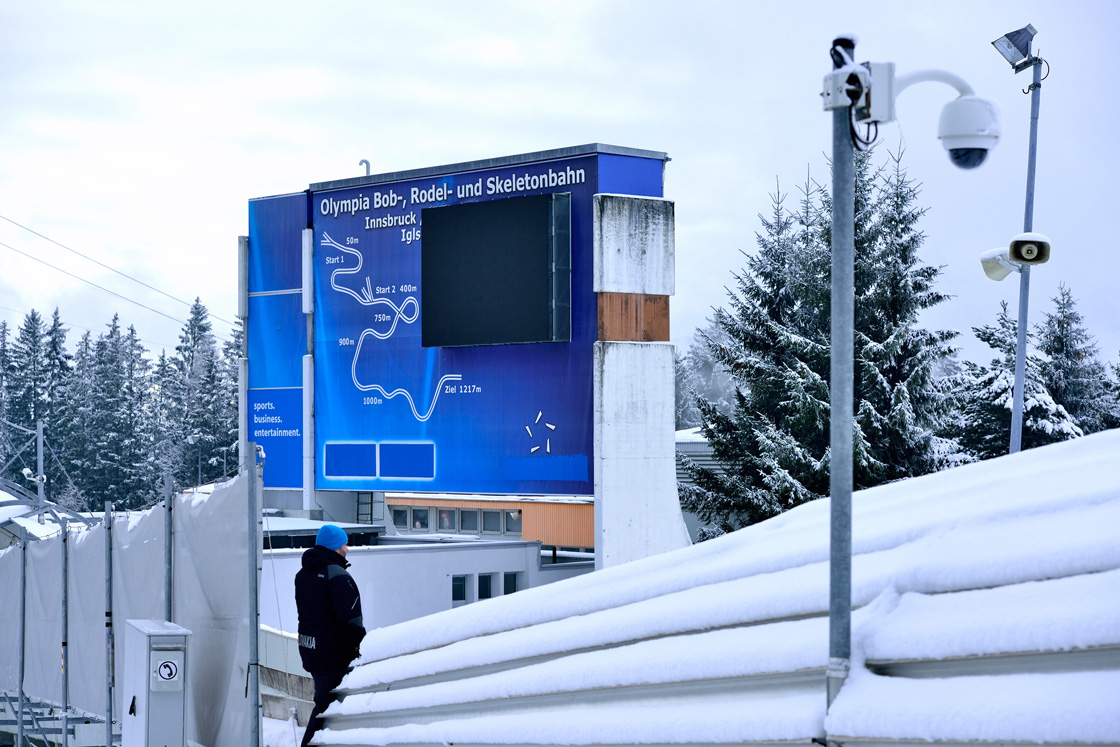
In bobsleigh and luge sporting events, every hundredth of a second counts for the pilots. Besides driving skills and sporting ability, the high-tech facilities are also extremely important. To be able to provide these sports with suitable training and competition conditions, the Olympia Sports and Event Centre Innsbruck has extensively modernized its track, which was constructed for the Olympic Games in 1976, and brought it up to today’s standards.
During the tendering process for the new refrigeration systems, the decisive factors were the energy and investment costs required to operate the installation. ENERTEC Naftz & Partner OEG succeeded in putting forward the most impressive concept by specifying VLT® drives to control the separator and ammonia pumps. Cofely Kältetechnik carried out the modernization work.
Olympia Sports and Event Centre Innsbruck
Bobsleigh, luge and skeleton have a proud tradition in Innsbruck-Igls. Innsbruck hosted the World Championships for the first time as early as 1935, though this was on the natural ice run on the Patscherkofel. Artificial ice was used for the first time on the track constructed for the Winter Olympics in 1976.
Today, following extensive modernization work, the bobsleigh, luge and skeleton track, at a total length of 1,270 meters, is once again regarded as one of the most cutting-edge artificial ice tracks in EuroWith an elevation of 100 meters, 14 turns and its legendary Kreisel (circular) curve, it provides national and international associations with perfect training and competition conditions. It is also popular with budding sporting talent at home, and is available for them to use for around four and a half months in the winter season.
During the last season, from the beginning of November until the end of March, the athletes used the track for 210 speedy downhill runs a day during 125 days of operation. This added up to an impressive 26,000 runs during the season.
Despite this intense usage, the ice quality is always world-class. The new refrigeration system ensures that the track conditions are perfect throughout the whole season. The experienced specialists from Cofely Kältetechnik were responsible for modernizing the refrigeration technology, which cost around EUR 1 million.
In addition to Cofely’s many years of experience, the modernization concept put forward was also a decisive factor in awarding the contract. The convincing arguments of the plan included the mix of energy and investment costs.
20% savings
Calculations show that the operator achieves a reduction in electricity costs of around 20%.
80 kilometers of refrigerant piping
To cool the approximately 5,500 m² ice surface in the best possible way, around 80 kilometers of refrigerant piping has been laid along the track. The key component of the refrigeration system is the separator. It is operated by three screw compressors with a refrigerating capacity of 2,700 kW. The base load is supplied by a compressor drive, which is frequency-controlled by a VLT® HVAC Drive FC 102. With an electrical output of 315 kW, it is designed for rotational speeds of up to 4,000 rpm. Two further screw compressors, each driven by a 200 kW motor, cut in when required. Around
38 tons of natural ammonia NH3 coolant circulates around the refrigerant piping of Austria’s largest refrigeration system. The natural ammonia coolant has both technical and ecological benefits. Compared to other coolants, it is both highly economical and safe, as well as environmentally sustainable, since ammonia does not damage the ozone layer or contribute to the greenhouse effect.
Perfect ice quality
For successful training and the best possible competitions, perfect ice on the track is vital. There are several factors which can have a negative impact on the quality of the ice. At the very top of the list is the height difference of 100 meters between the start and finish. Here, the temperature difference can quickly amount to between 4 and 5 degrees. If there is also sunlight on parts of the track, temperature variations can even reach double figures. Without complex, segmented temperature control, uniform cooling of the track would not be possible.
The track is divided into 42 sections. To optimize the temperature in each section according to requirements, it has an outside temperature and track sensor. To control the coolant, Cofely opted for Danfoss ICM motorized valves with ICAD 1200/600 servo motors for this project. They have menu-driven buttons and a built-in display. This enables application-related settings to be made with ease, and the current degree of valve opening can be checked during operation. This technology enables the ice quality to be optimized over the entire 1,200 meters of track, and temperature variations to be largely compensated for.
Efficient ammonia pumps
An important issue for the track operator was the energy efficiency of the system. When designing the four ammonia pumps and the fans for the four evaporative condensers, the planners from Cofely Kältetechnik once again opted for energy-efficient VLT® drives.
The 38 tons of coolant in the refrigerant piping must circulate at a defined flow rate according to the weather conditions. This is ensured by four powerful pumps which are each controlled by a VLT® HVAC Drive.
Cofely also opted for the efficient VLT® HVAC Drive converter technology to control the four fans of the evaporative condensers.
Reliability and service make the difference
Effective AC drives now form the backbone of modern refrigeration technology, as found on the bobsleigh, luge and skeleton track in Innsbruck-Igls. The pioneering Danfoss VLT® HVAC Drive is an essential component of this system, as it reliably ensures the entire operation of the track and a high level of energy efficiency. As the operator, the Olympia Sports and Event Centre Innsbruck relies on Danfoss quality and efficient service.
